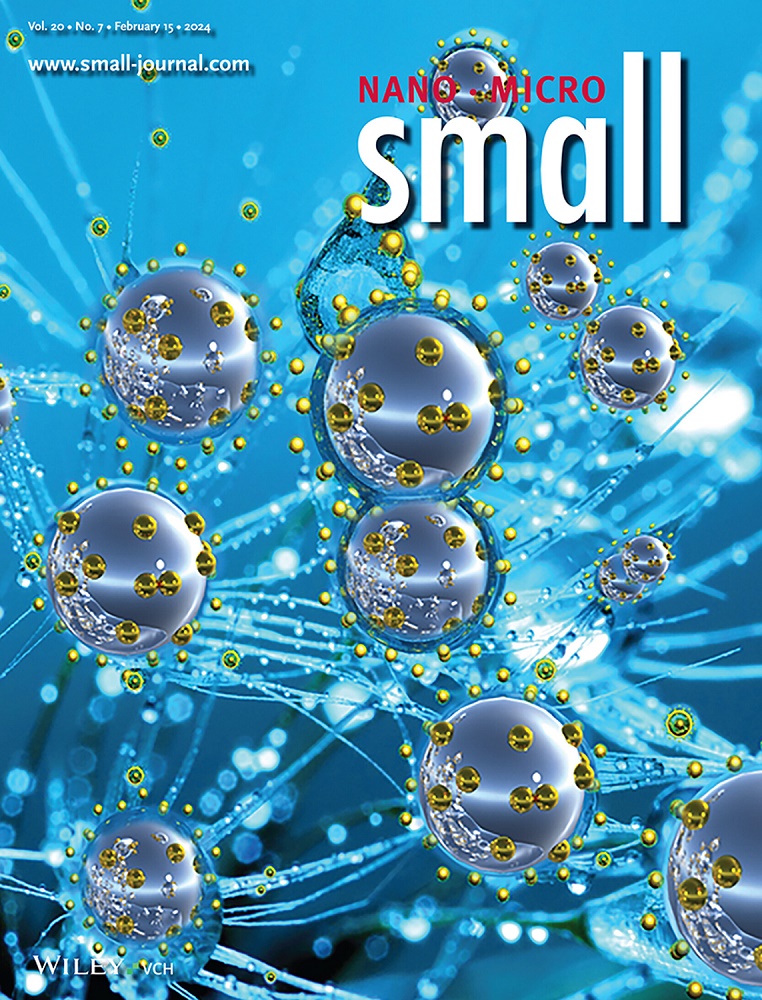Synergistic Electronic Modulation via Dual-Atomic Site Engineering in RuCo Hybrids for Optimized Hydrogen Adsorption and Enhanced Overall Water Splitting.
IF 13
2区 材料科学
Q1 CHEMISTRY, MULTIDISCIPLINARY
引用次数: 0
Abstract
Developing hydrogen as a clean, sustainable energy carrier relies on green electricity-derived large-scale water splitting production. However, it is greatly limited by the inherently sluggish reaction kinetics and high energy barriers associated with proton reduction. Herein, the study proposes heterostructured RuCo-nanocubes (RuCo-NC) engineered through phase control and metal integration to optimize hydrogen adsorption, enhancing catalytic efficiency by reducing energy barriers and improving mass and charge transport. Experimental and theoretical analyses revealed that incorporating Ru into Co-NC induces electron redistribution and enhances the proton source, while reducing the adsorption of H* on RuCo-NC, thereby facilitating hydrogen spillover and accelerating HER kinetics. Consequently, the RuCo-NC catalyst achieves 10 and 100 mA cm⁻2 current densities with overpotentials of just 15 and 76 mV, under alkaline conditions, outperforming most Ru-based catalysts and benchmark Pt/C. The assembled RuCo-NC || Ir/C electrolyzer shows an excellent energy-saving effect for water-splitting, achieving the cell voltages of 1.510 and 1.731 V, at 10 and 100 mA cm-2 current densities, respectively, with stable operation for over 120 h. This novel approach offers designing highly efficient HER electrocatalysts with low noble metal content through tailored structural features and interfacial synergy to accelerate proton reduction kinetics.基于双原子位点工程的RuCo杂化体协同电子调制优化氢吸附和增强整体水分解。
发展氢作为一种清洁、可持续的能源载体依赖于绿色电力衍生的大规模水分解生产。然而,它受到固有的缓慢反应动力学和与质子还原相关的高能量势垒的极大限制。因此,本研究提出了通过相控制和金属集成设计的异质结构ruco - nancubes (RuCo-NC)来优化氢吸附,通过减少能量障碍和改善质量和电荷输运来提高催化效率。实验和理论分析表明,在Co-NC中加入Ru可以诱导电子重分布,增强质子源,同时减少氢*在RuCo-NC上的吸附,从而促进氢溢出,加速HER动力学。因此,RuCo-NC催化剂在碱性条件下达到10和100 mA cm - 2电流密度,过电位仅为15和76 mV,优于大多数钌基催化剂和基准Pt/C。组装的RuCo-NC || Ir/C电解槽具有出色的水分解节能效果,在10和100 mA cm-2电流密度下分别达到1.510和1.731 V的电池电压,稳定运行超过120小时。这种新颖的方法通过定制的结构特征和界面协同作用,可以设计出低贵金属含量的高效HER电催化剂,以加速质子还原动力学。
本文章由计算机程序翻译,如有差异,请以英文原文为准。
求助全文
约1分钟内获得全文
求助全文
来源期刊

Small
工程技术-材料科学:综合
CiteScore
17.70
自引率
3.80%
发文量
1830
审稿时长
2.1 months
期刊介绍:
Small serves as an exceptional platform for both experimental and theoretical studies in fundamental and applied interdisciplinary research at the nano- and microscale. The journal offers a compelling mix of peer-reviewed Research Articles, Reviews, Perspectives, and Comments.
With a remarkable 2022 Journal Impact Factor of 13.3 (Journal Citation Reports from Clarivate Analytics, 2023), Small remains among the top multidisciplinary journals, covering a wide range of topics at the interface of materials science, chemistry, physics, engineering, medicine, and biology.
Small's readership includes biochemists, biologists, biomedical scientists, chemists, engineers, information technologists, materials scientists, physicists, and theoreticians alike.
 求助内容:
求助内容: 应助结果提醒方式:
应助结果提醒方式:


